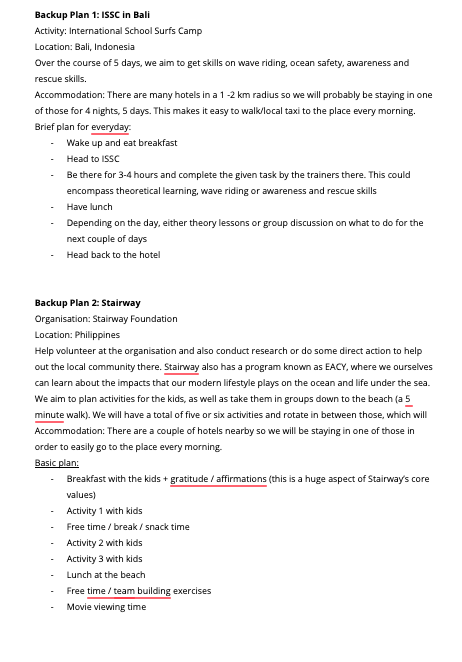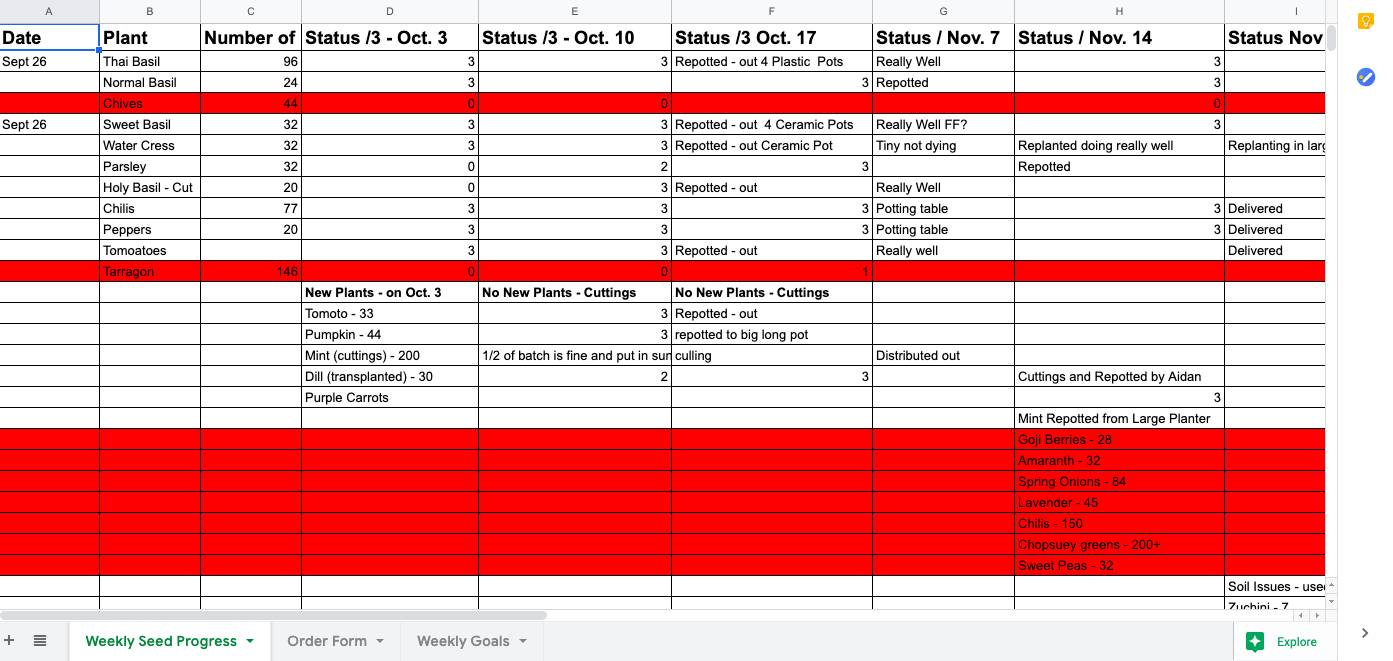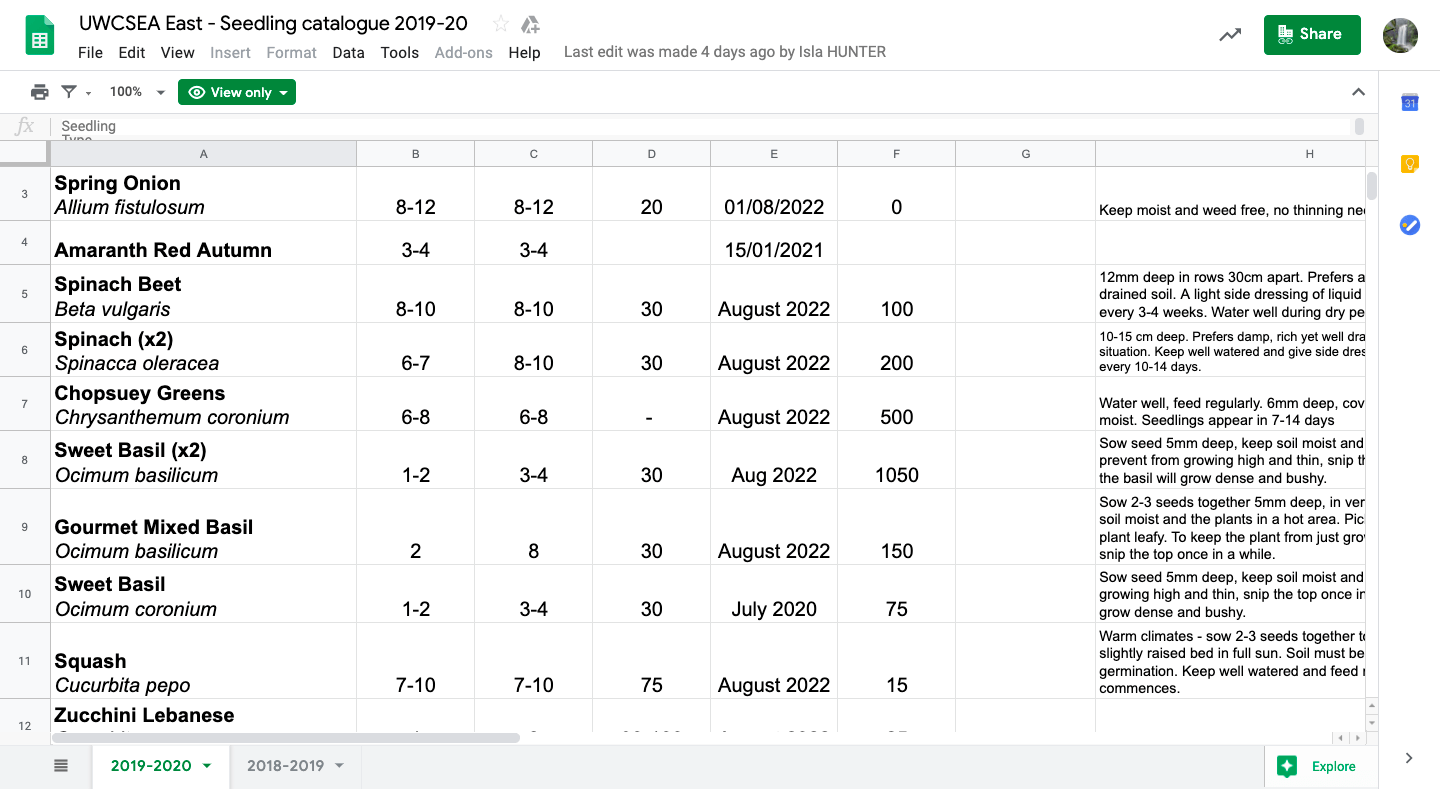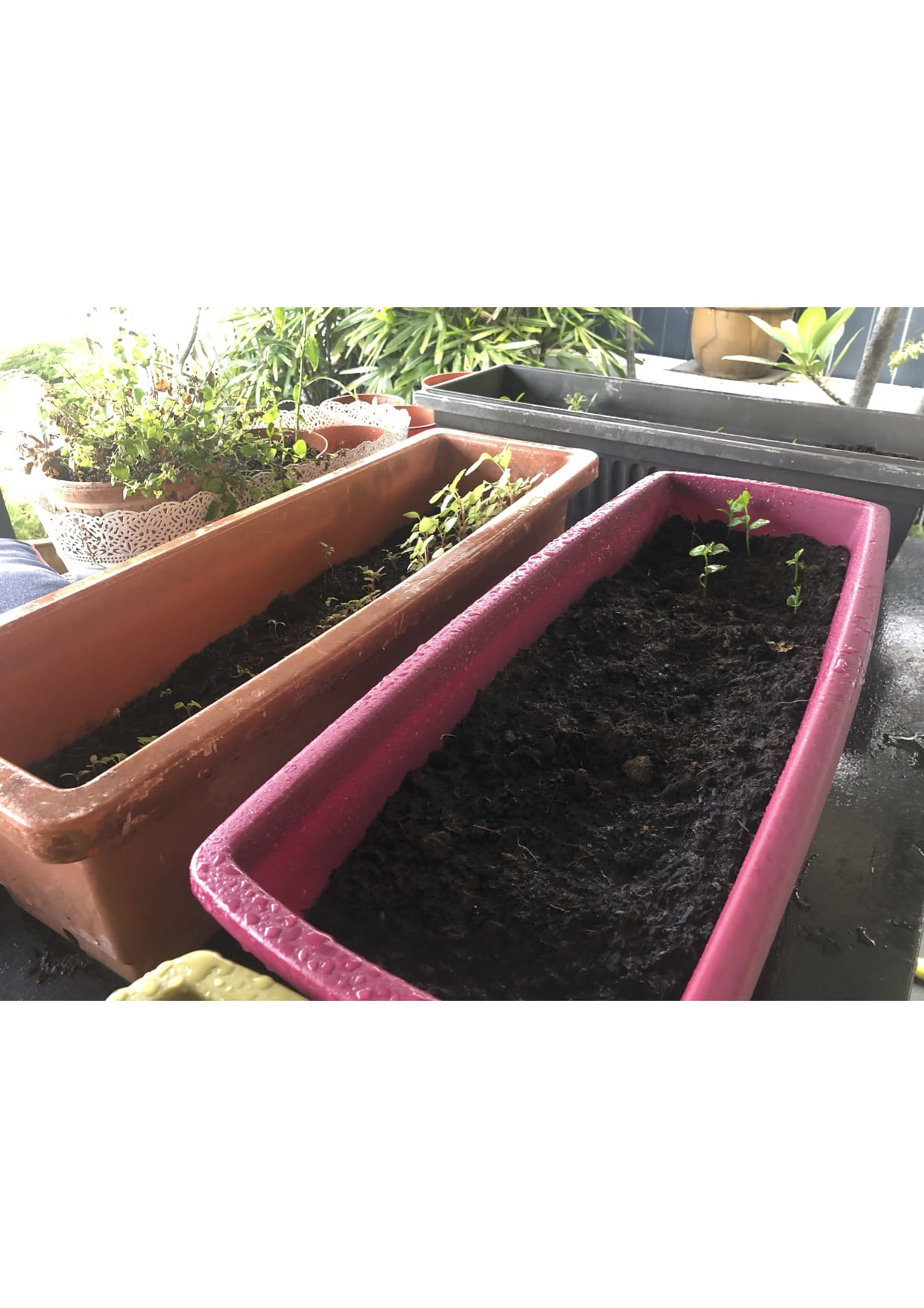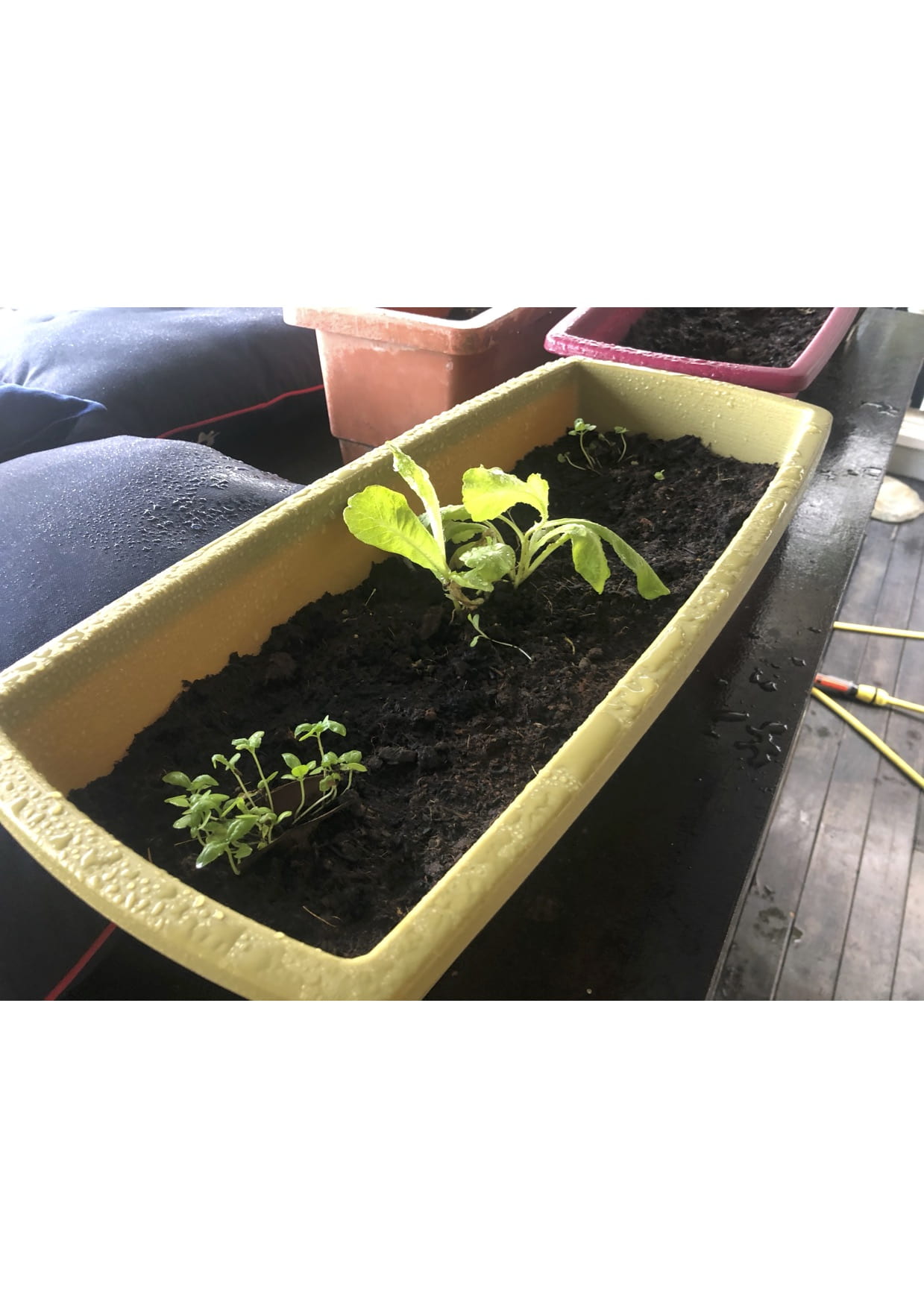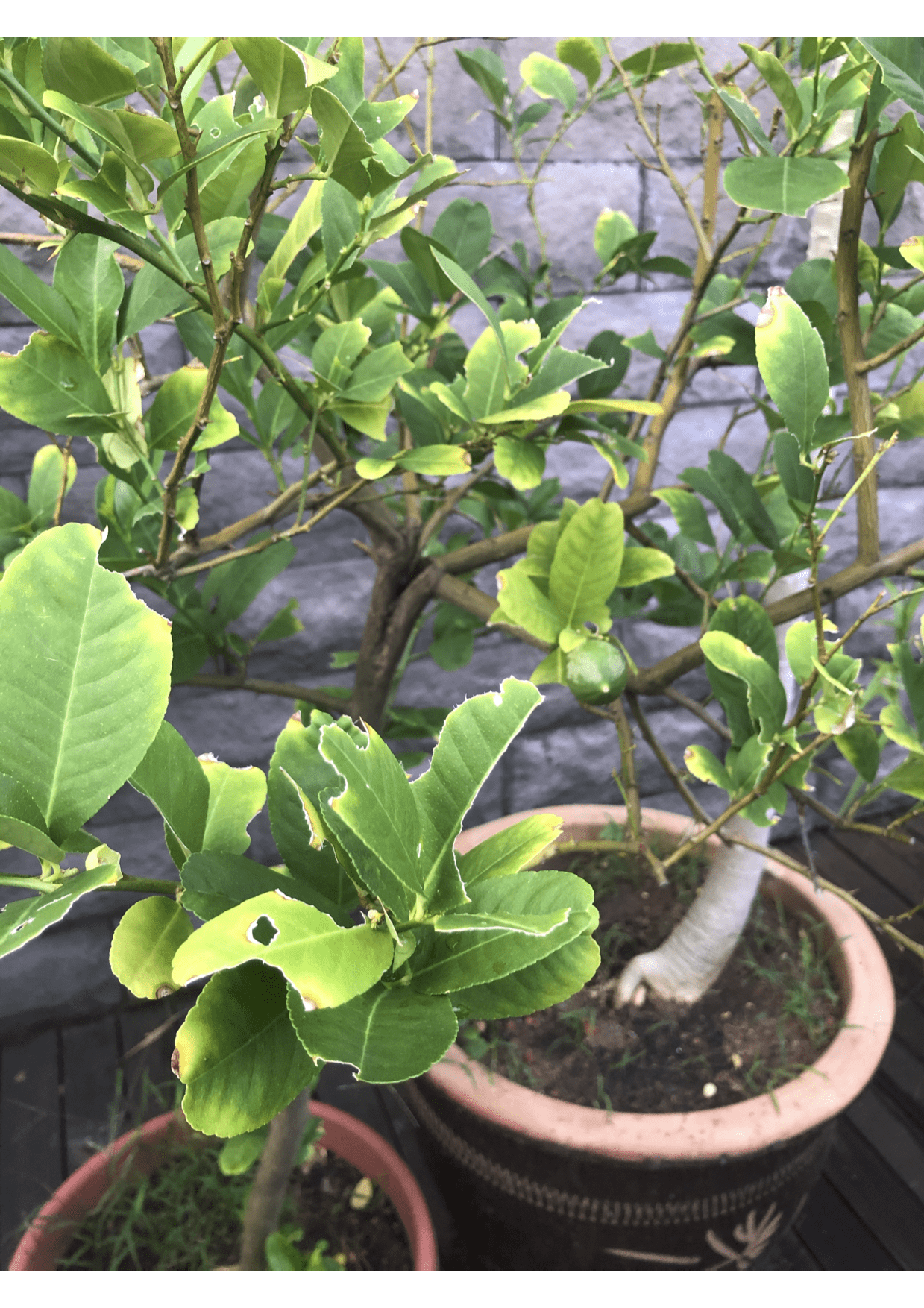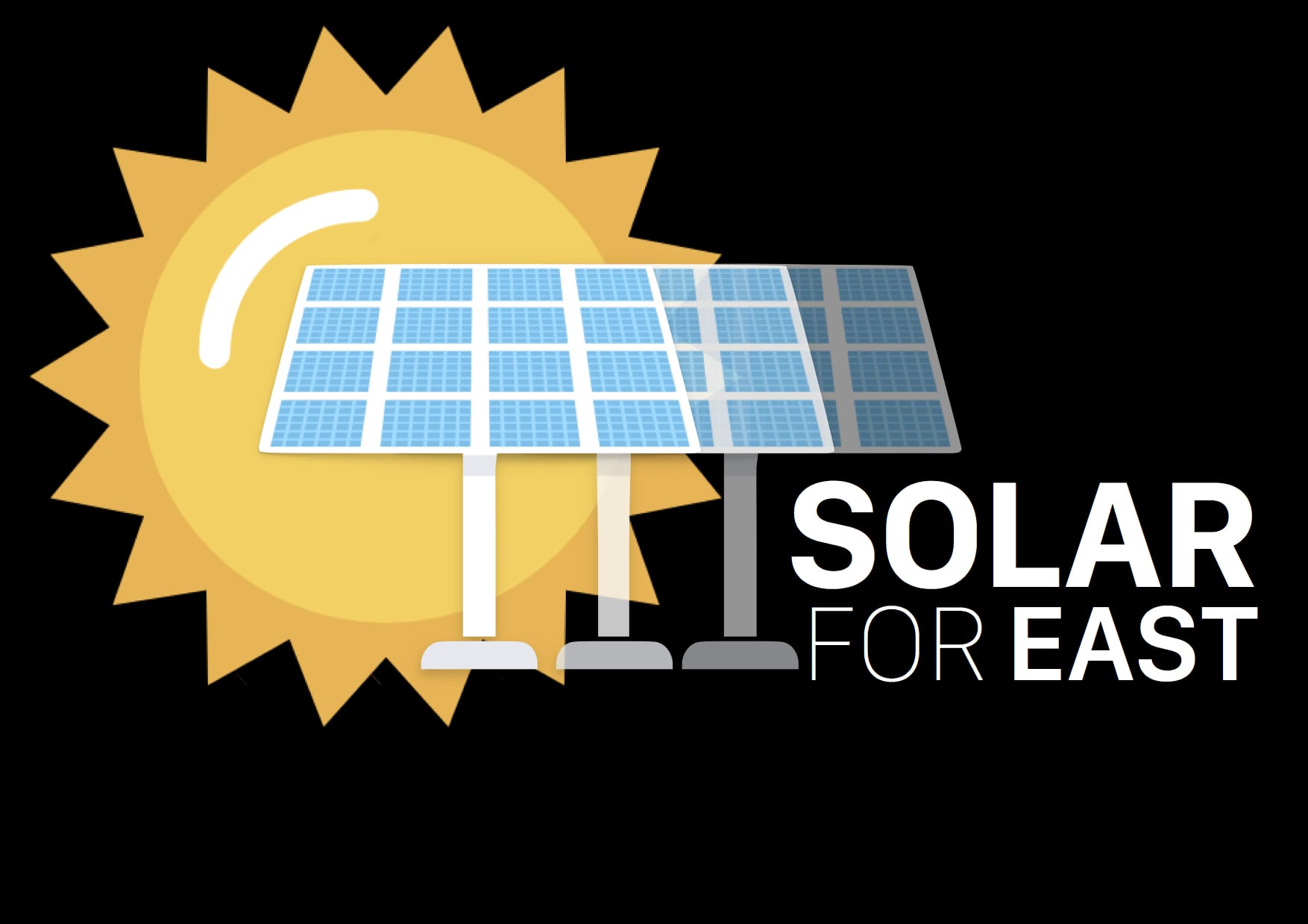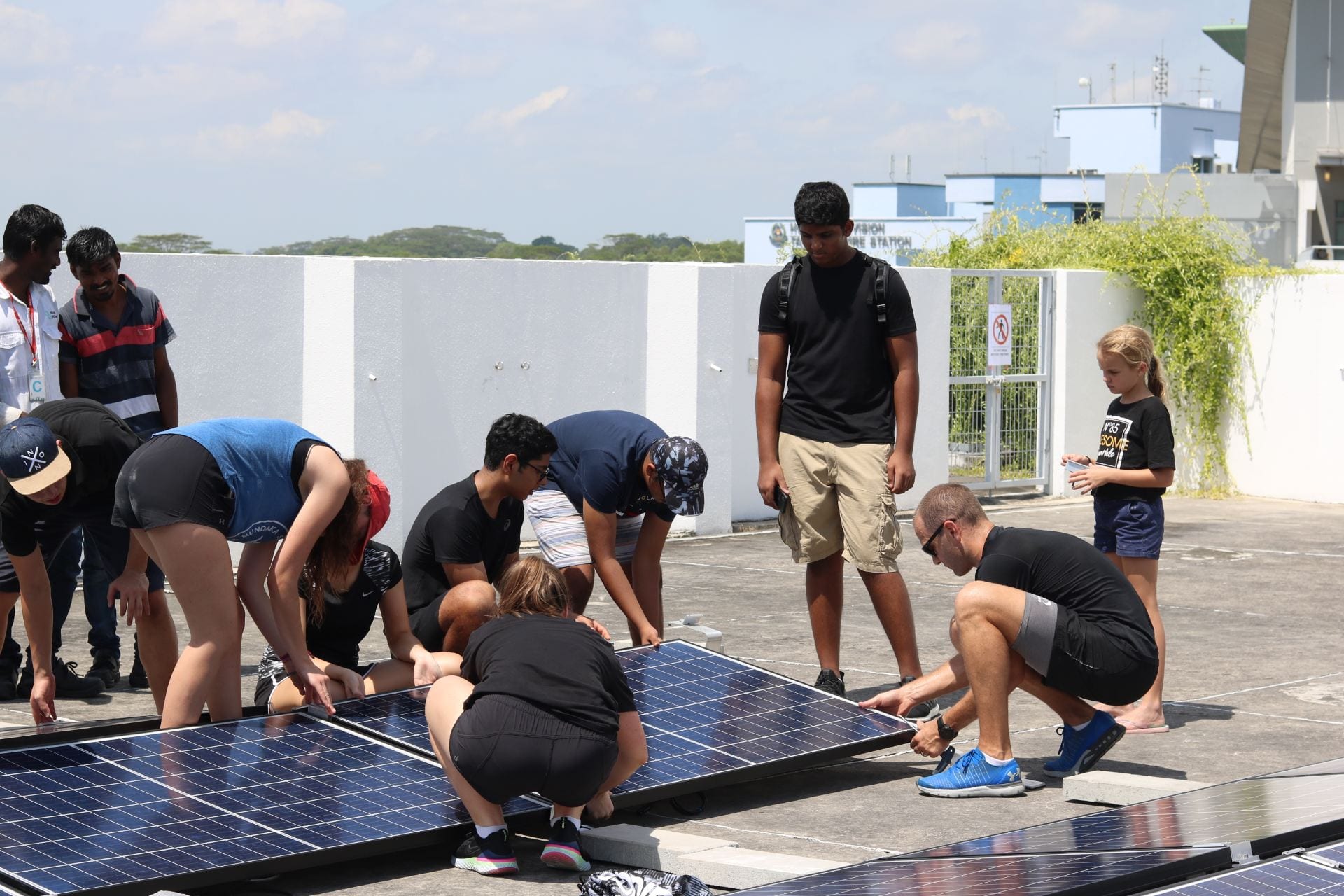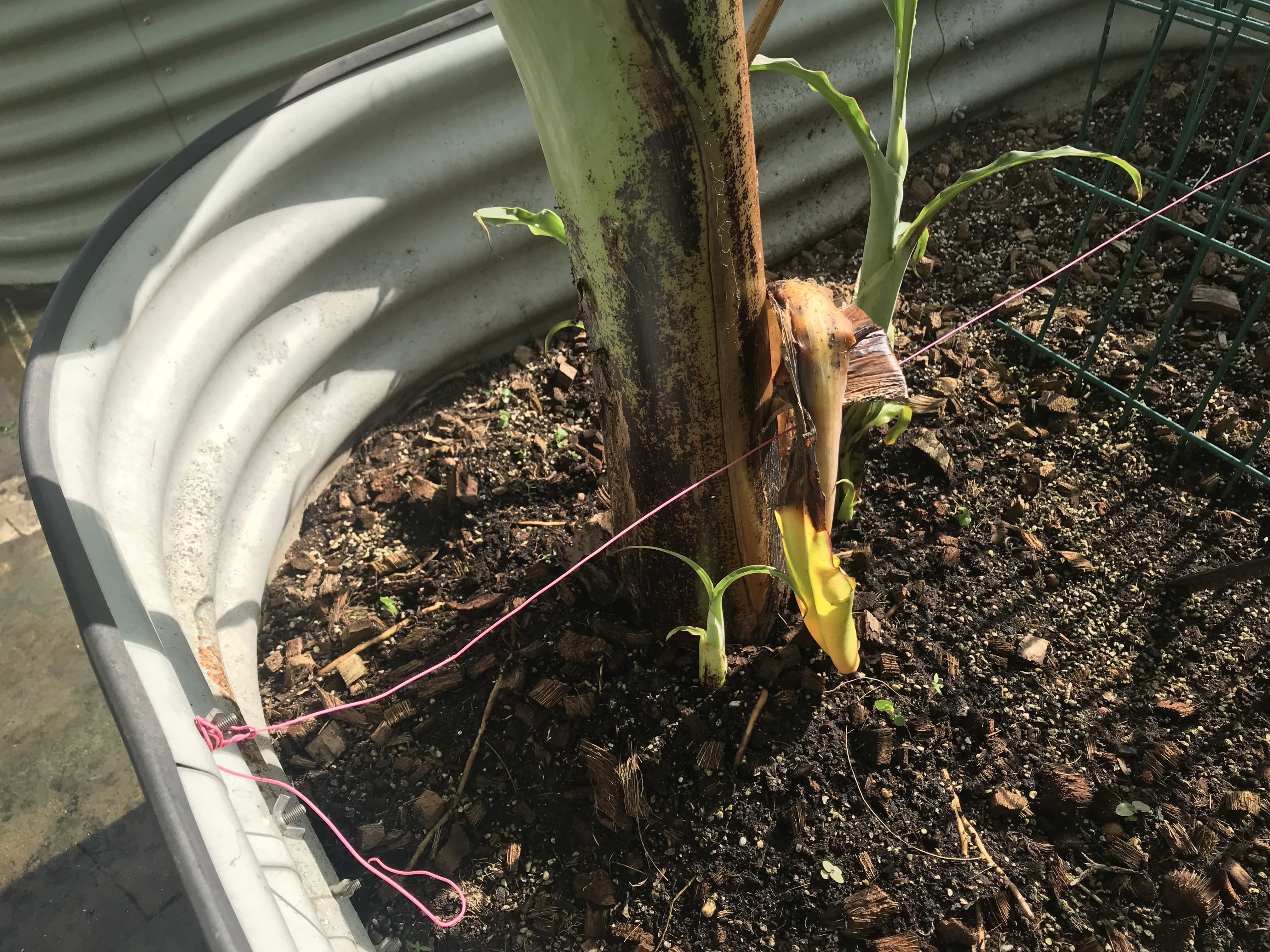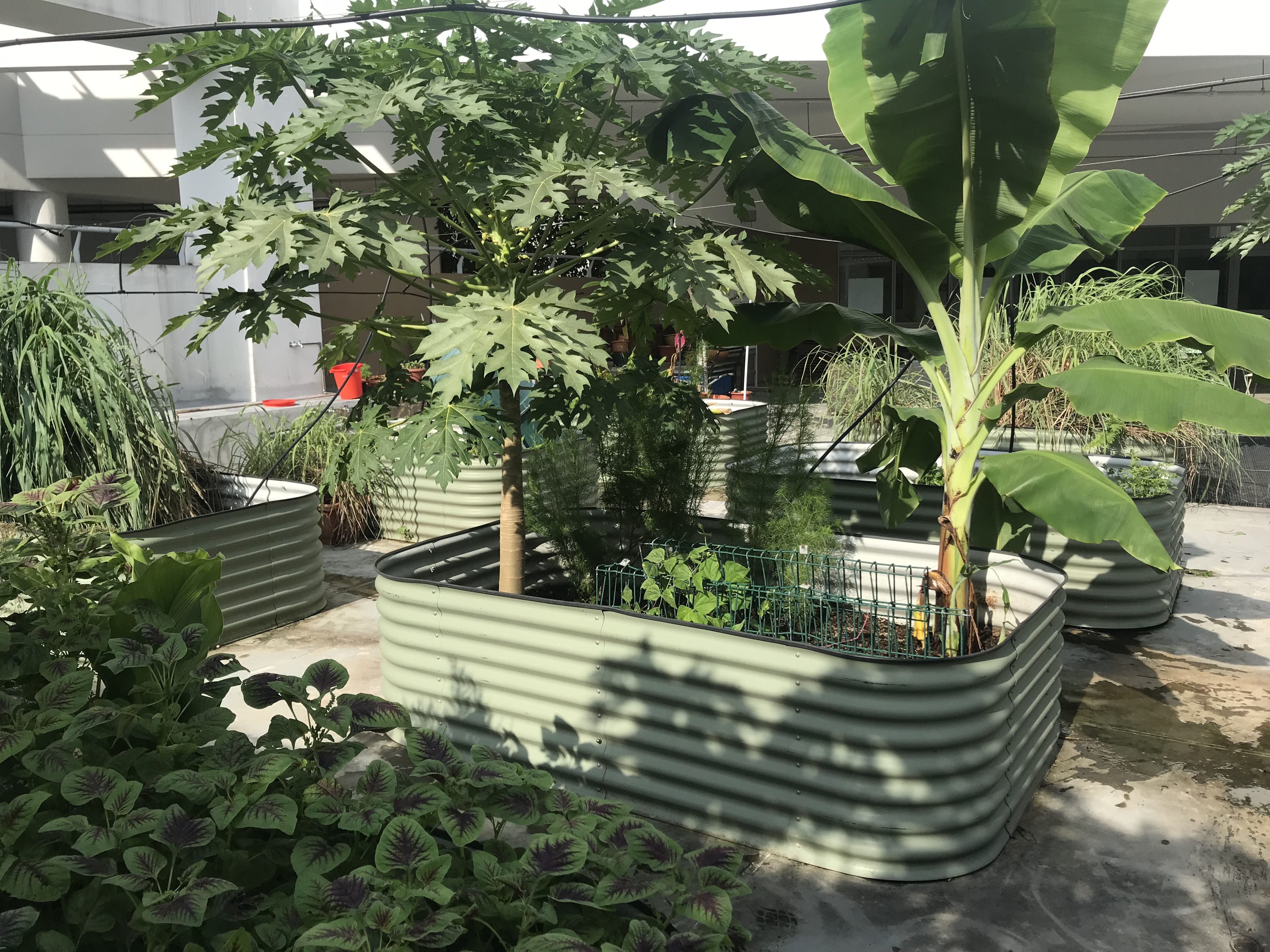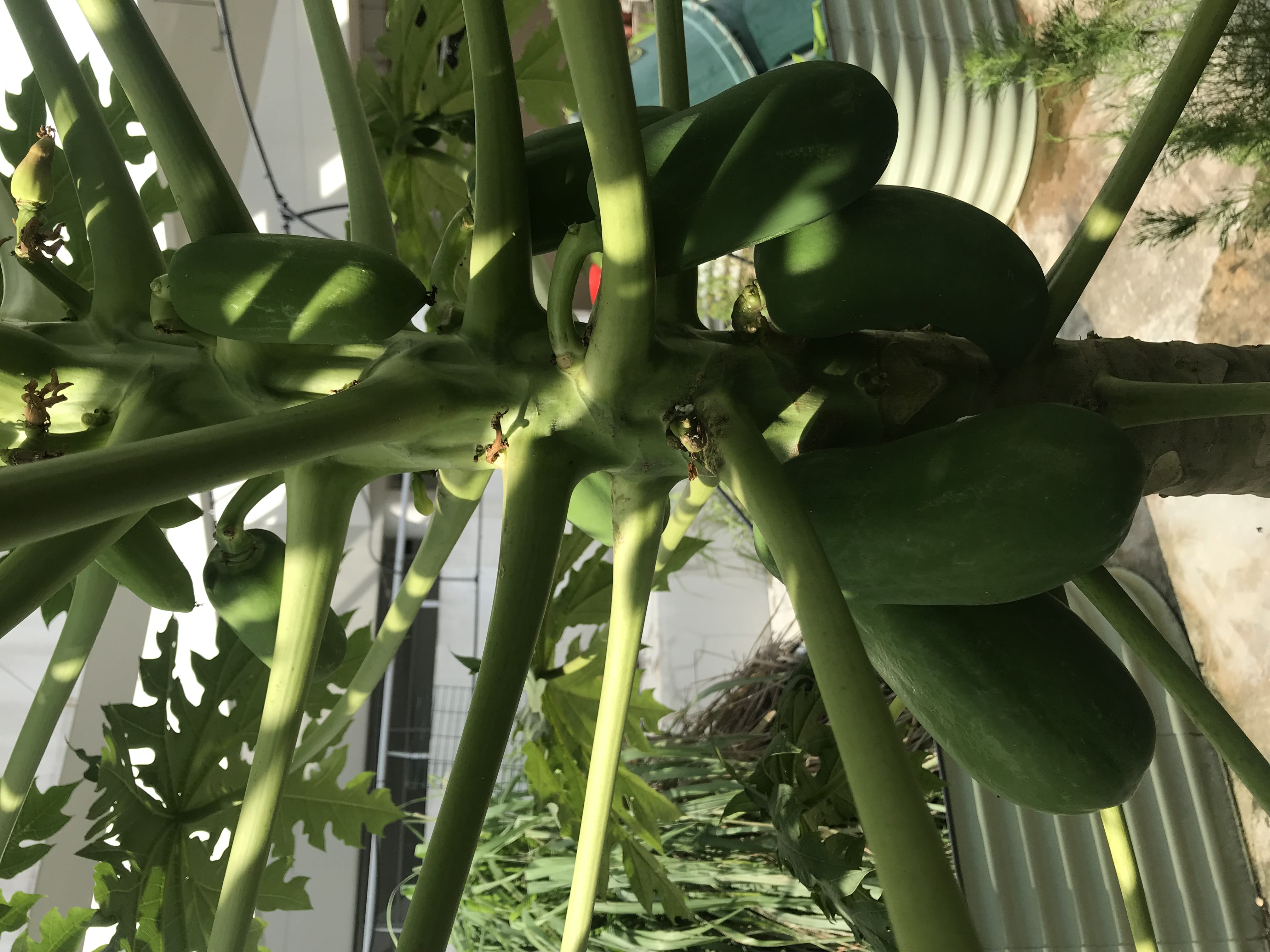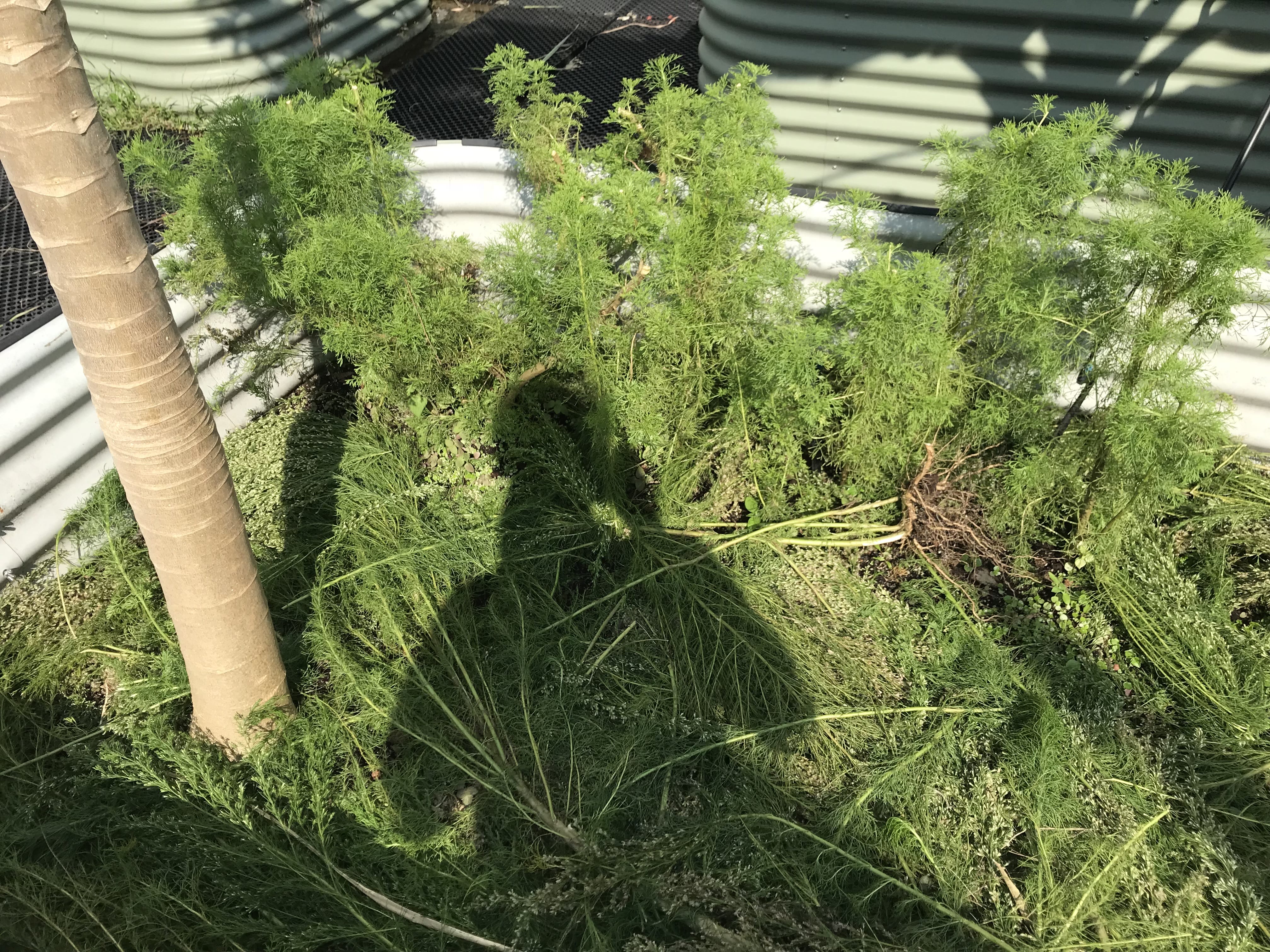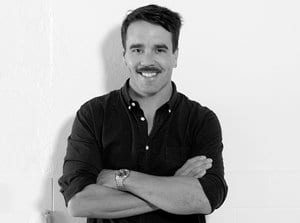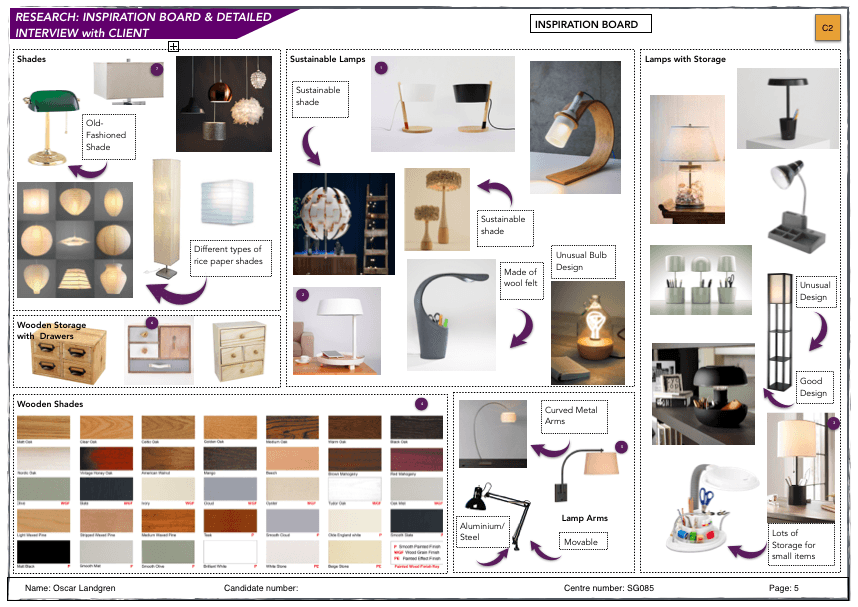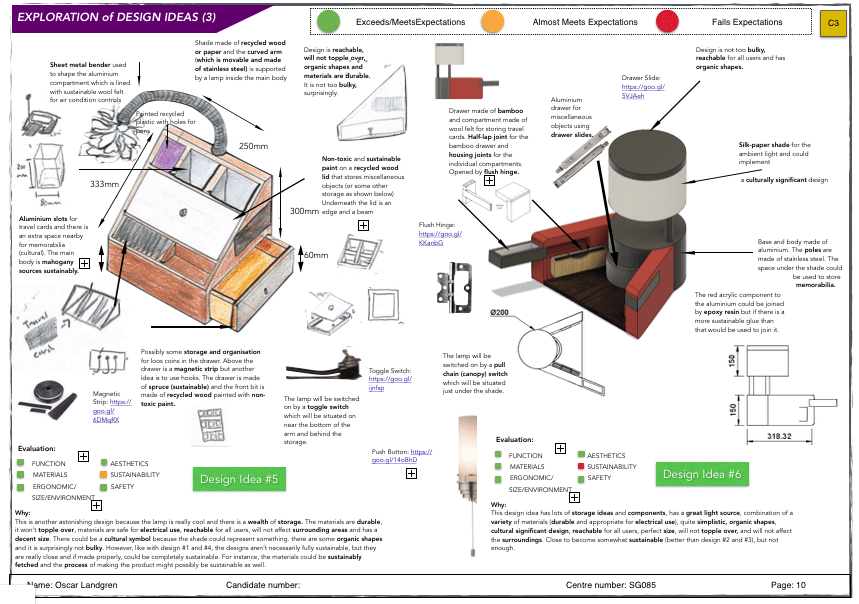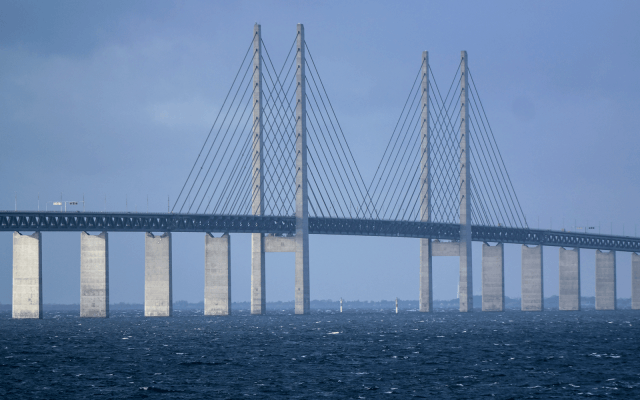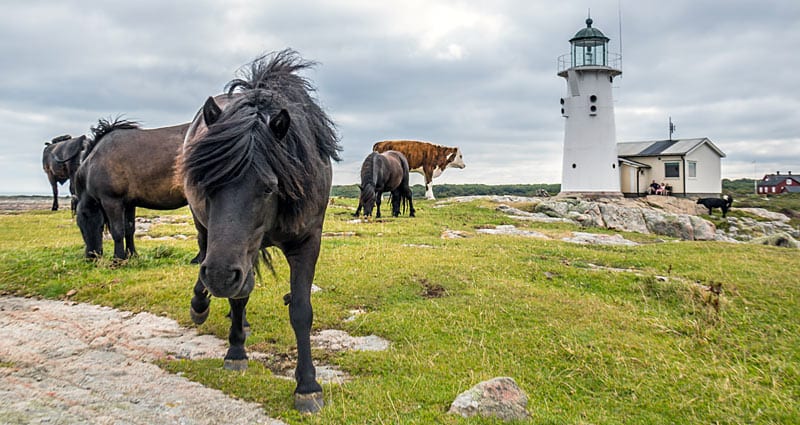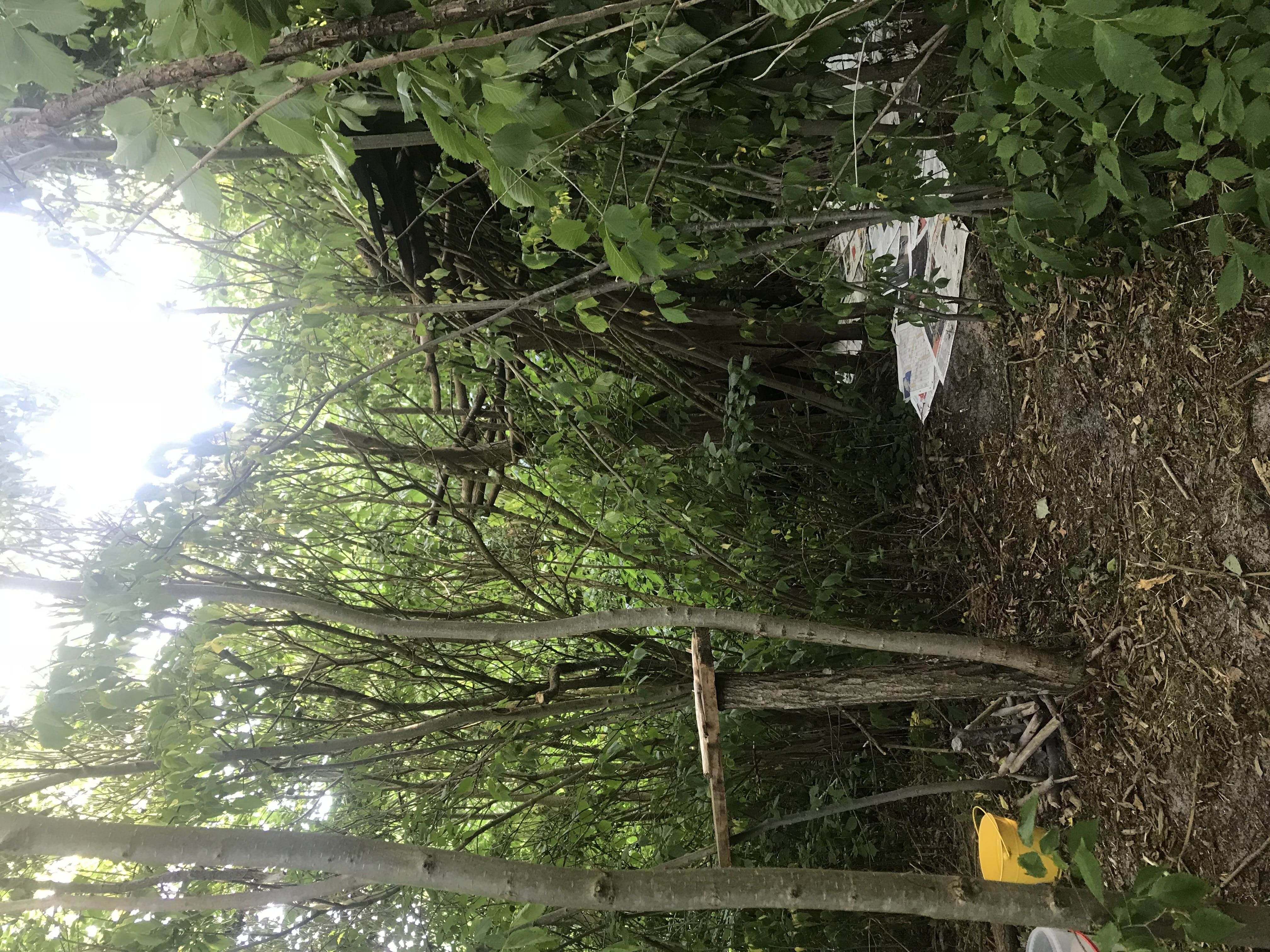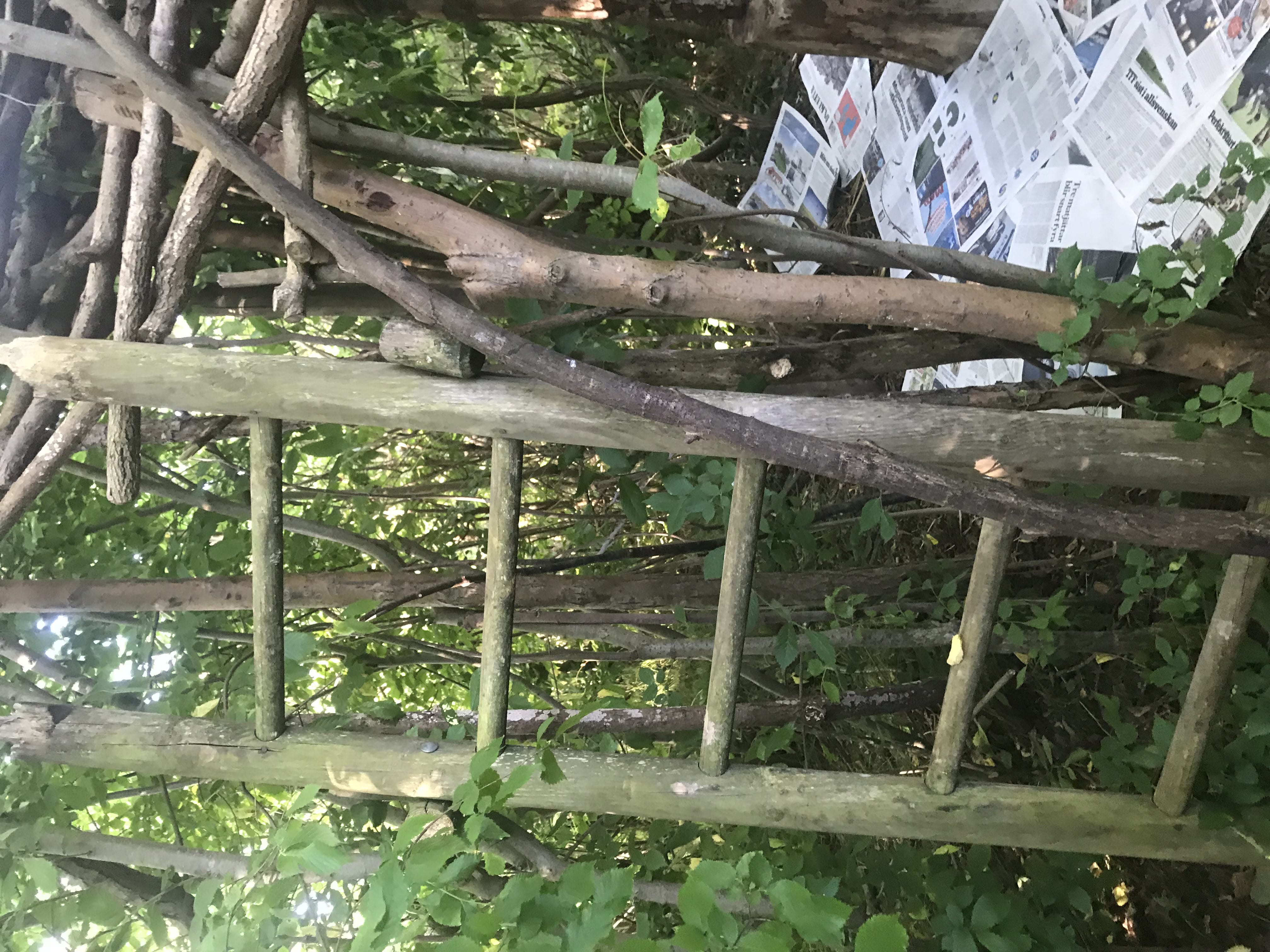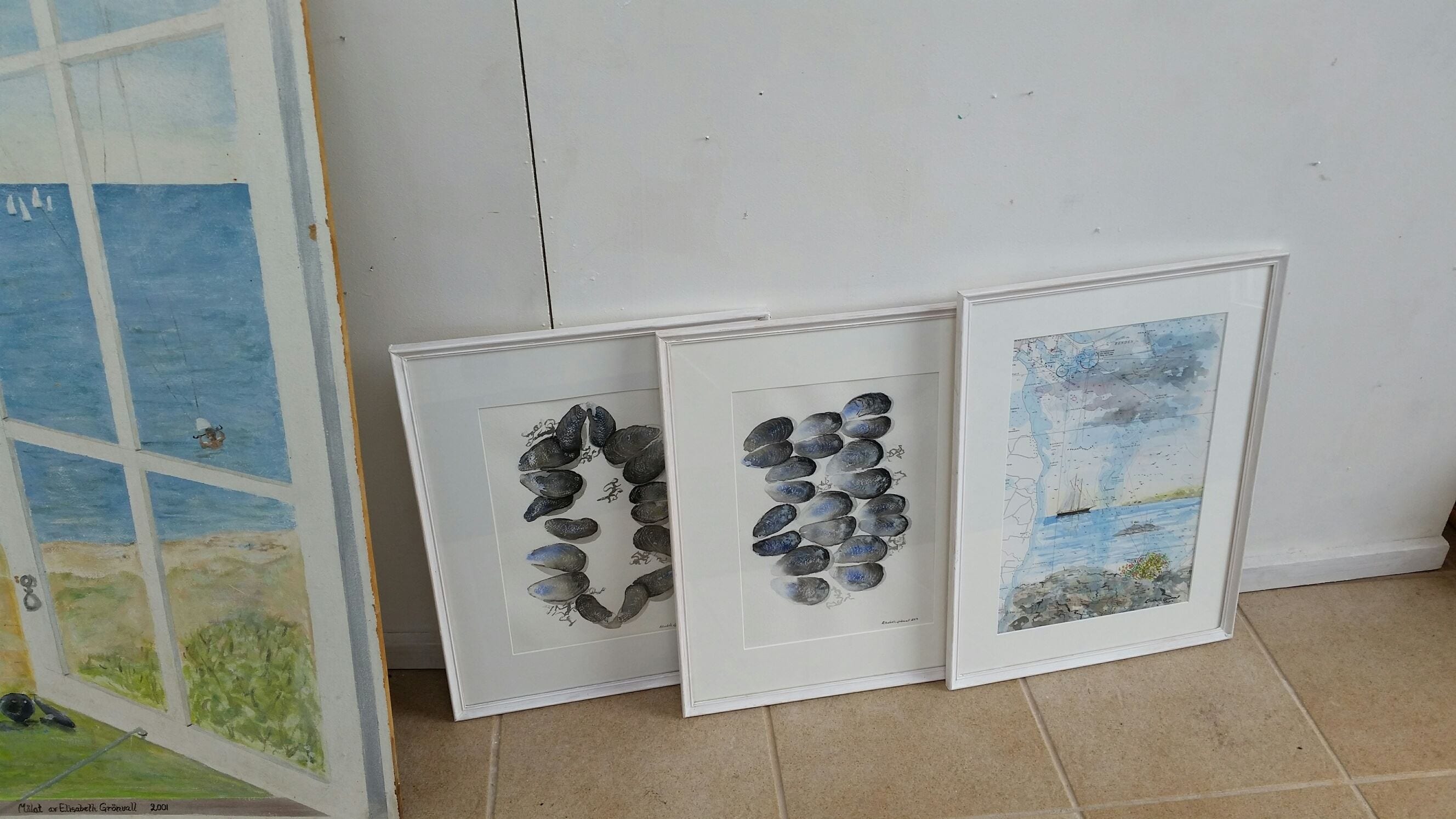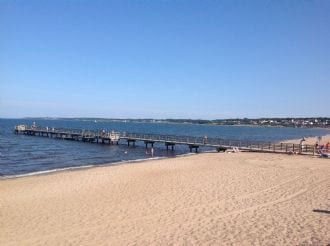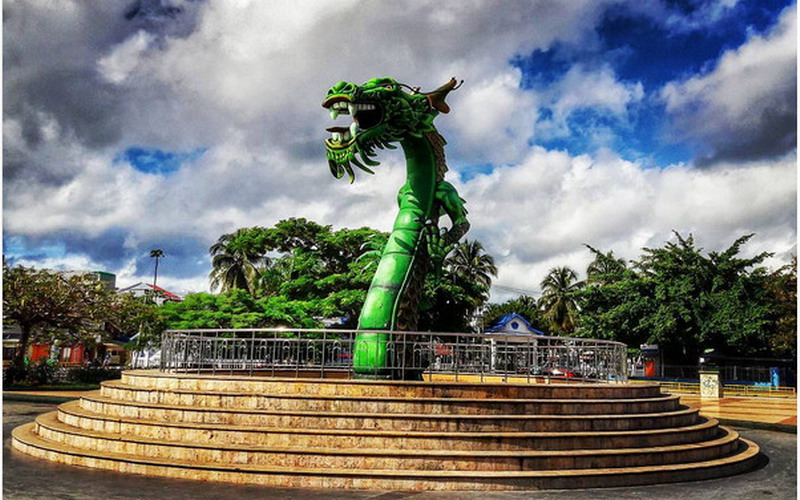September 10th, 2019
Investigation:
I have been with this GC (global concern, a group at school that works with an NGO) since Grade 8 and I am going to continue this service in Grade 11 and 12 aiming for a leadership role, which will most likely be vice-chair. As with many of the activities and services I am with, this has an environmental focus where we raise money for the Gili islands to help restore the coral reefs and taking care of the island through bio rock technology (a structure with an electric current that runs through it, that allows coral to grow on the cage-like structure), eco-tourism and waste management. (For more information visit their website).
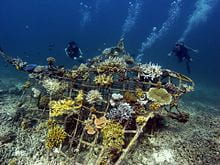
Image 1

Image 2
Sources:
Image 1: Gili Eco Trust. (2012). En.wikipedia.org. Retrieved 10 September 2019, from https://en.wikipedia.org/wiki/Gili_Eco_Trust
Image 2: Gili Eco Trust. (2012). En.wikipedia.org. Retrieved 10 September 2019, from https://en.wikipedia.org/wiki/Gili_Eco_Trust
Preparation:
I used to be the media advisor, where I was working on our blog (link), but now I will be moving up to a leadership role. The leadership team from last year (now in Grade 12) will remain in leadership until Swimdonesia which is an event that will happen on the 11th of October. This is an event where we work together with tow other GCs, Surf Aid and Jakarta Street Kids, to raise money for our respective Global Concerns. During Swimdonesia Gili Eco Trust we responsible for the managing of the obstacle course named “The Destroyer”, selling our merchandise and products throughout the event by the pool, and providing entertainment for the visitors. The Chair, Vice-chair and I have already had a meeting with the other GCs, reflecting back on what we did and preparing some ideas for Swimdonesia this year.
During this session today, we helped the new members by teaching them about what the GC is and what are major events are. We asked them to create presentations about what the GC is, what our events are, what are some solutions to the problem we are addressing and a bit about the Gili Eco Trust NGO.
———————————————————————————————–
Sep 24th
Preparation:
Carrying on from the last session, we discussed some of our roles, contributions and ideas for the Swimdonesia event in October. Our GC has the role as the games and in a sense, the carnival manager at the Swimdonesia event to attract more people than just swimmers. Last year, the use of the Destroyer was really effective but we want a bigger audience. The other two GCs are head of the food and drinks, and the actual Swim for Life contribution.
Our GC will be there to MC, sell our products and be head of the games. Below were a plan and map of what we might be doing.
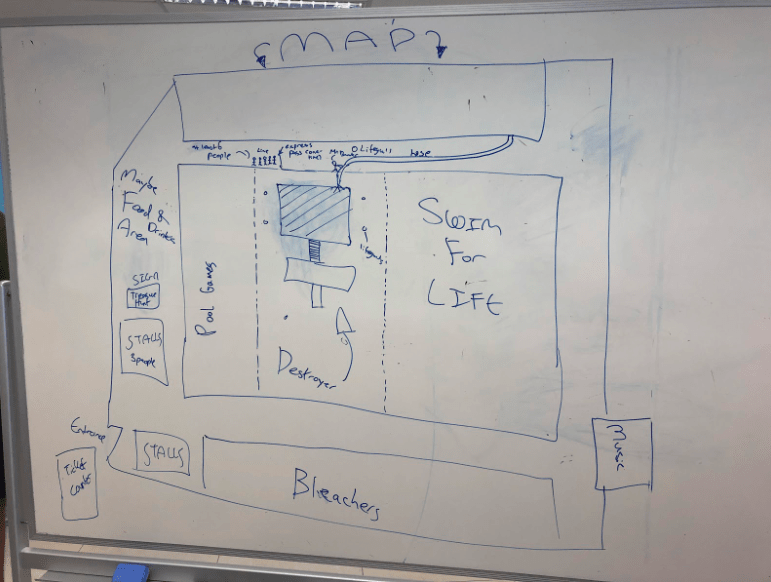
We decided to of course have the Destroyer where we will have lifeguards around it. We have also decided to add an area for pool games where the guests (mainly children) play around with noodles, balls, frisbees and more. We’ve also got two games and a quiz where if you win, you get a free express pass (one time) to go cut the line (because last year the lines were long and to incentivise people to learn about our GC and come to the event). These games include the water gun game and a ring toss. We also have a quiz on our GC and the event.
#LO3
October 11th, 2019,
Action and Reflection:
Today, we had the Swimdonesia event and a lot of things happened. Some things were better than last years and previous events, and other things were not as good. Anyhow, it was still a great event. To reflect on this, I will use a SWOT Analysis or Strengths, Weaknesses, Opportunities, Threats.
Strengths:
- A lot of people showed up including a few middle and high schoolers which are quite unusual for such events as many students in this age range, mainly high schoolers, are not as willing to give up time to support a service event even if it involves something really fun like a giant obstacle course. Also, this was despite the quite short advertising period which I think was about two weeks.
- A lot of young kids, mainly primary school, showed up to go on the destroyer and play in the water play area from, and there were still about 20 people who still wanted to go on the Destroyer (the obstacle course) at 7:30. So it was very popular. When we started the event, almost a hundred kids ran to wait in line and that was exciting to see
- Our GC helped a bit in food stalls and we sold a lot of pizza and a few drinks as well as other food.
- The Swim for Life went well as always.
- Regular announcements as well as publicity on our cause and why we are hosting this event
- Lifeguards and no one got seriously injured.
- Quite a few people stayed back to help clean up.
- Time was utilised effectively by cleaning up early
Weaknesses:
- Almost no one came to our stall to buy our stuff and I don’t think we sold anything. Also, the only thing we could sell was Surf Mud (a zinc cream that is more sustainable than regular sunscreen). So from that perspective, we couldn’t help our GC or NGO (Gili Eco Trust), however, the sales from the tickets were really good.
- Not everyone from our GC showed up or couldn’t make it (or perhaps skipped)
- The lines were sometimes ridiculously long and it kept a lot of people waiting
- The event was not targeted to parents, adults and older students (although some came)
- Perhaps not everyone really understood the cause despite the announcements, which could be because of the Destroyer is a big part of the event
- Although most of the Destroyer and stalls were set up, we were not as prepared as we could be, for instance, our banner was in the wrong place, it took a while for the event to start rolling and took a while to get the hose in place.
- The entrance band would fall off in the water
- A few issues in checking the wristband ticket as some parents just needed to pick up their children so a confusion there on who can pass.
- We didn’t have that many opportunities to interview the swimmers because they were hesitant and they said no to us
- The instruction for some roles was not clear-for instance people doing water safety didn’t really know what exactly to do in the water (or even where to start in the first place until asked a teacher) Additionally some roles were also assigned to people in our GC and another GC, communication was lacking in that there was an overlap of roles.
- An excess of sugar for the candy floss machine – not estimating consumption well enough?
- Switching roles-sometimes hard to find the next person after the 1-hour slot is finished
- Wristband check seemed redundant because they were already checked by wristband sales
Opportunities:
- There was good weather, lots of sun and no rain or thunder.
- Despite the short advertising, it was effective enough to catch the attention of many people who came to the event.
- Since the event was going on for a long time, most people could attend despite the activities they may have had after school as there would be at least some time on that Friday afternoon that they were able to come.
- For food sales, collaborating with sustainable food distributors
- Advertising to parents, using it as an opportunity to educate them on issues relevant to GET → spread it to the community through them
- Communicate better with other GCs
- Selling other products, finding other successes like Surf Mud
- Starting advertising earlier so it is fresh in people’s minds at the beginning of the year
- Perhaps the last meeting before the event can have all the relevant GCs meet together to clarify
- As an MC we are allowed to hype up the event and keep everyone’s energy going.
- Merge the food ticket and entry ticket stall
- Roles should be distributed to GC’s as early as possible, so that extra manpower can be calculated and games can be planned ahead of time with all variables in mind.
Threats:
- Not everyone from our GC could attend and that could be because they were willing to, although a few came. The reason for this is that not everyone joins a GC because they are really passionate about the cause or want to help. Some people come because they have to or they think its a good idea, or their friends come. That is the consequence of having services so freely available at this school because there is almost a guarantee that not everyone will have enough care or will to do the extra or take part in events that we host. So that is quite a big threat meaning that we lose manpower at big events like this.
- Some events happened on the same day as Swimdonesia such as Friday Night Lights and other sports events, as well as regular activities. Also, MUN (Model United Nations) had a conference on that day.
- Only the near school community are allowed to join (due to Singapore regulations)
- Unable to do all the activities we had hoped because of the short time frame.
- Some disorganisation around sessions before the event (G10 and G11 3-way conferences causing confusion)
- Need more merchandise to sell
- We had to work very long tiring hours, we stayed for the whole event which was a bit boring because we didn’t have much to do.
- Didn’t communicate enough with other GCs – unorganised distribution of roles through time, as sometimes too many people (until 5) and then not enough (later on) – especially Water safety
- The destroyer was the biggest attraction if it rains almost no one will show up.
In order to improve we need to:
- Stricter rules and make sure everyone in our GC comes
- Get of class earlier to help set up
- Make sure we have more time to prepare, advertise and be ready for the event during the weeks leading up to it.
- Have more time to prepare for other activities to cater for more people
- Include activities and amenities that will attract a larger audience so more donations and proceedings going to our NGOs and cause.
- Be more organised
- Have a line system organised and more activities so the lines don’t have to be so long.

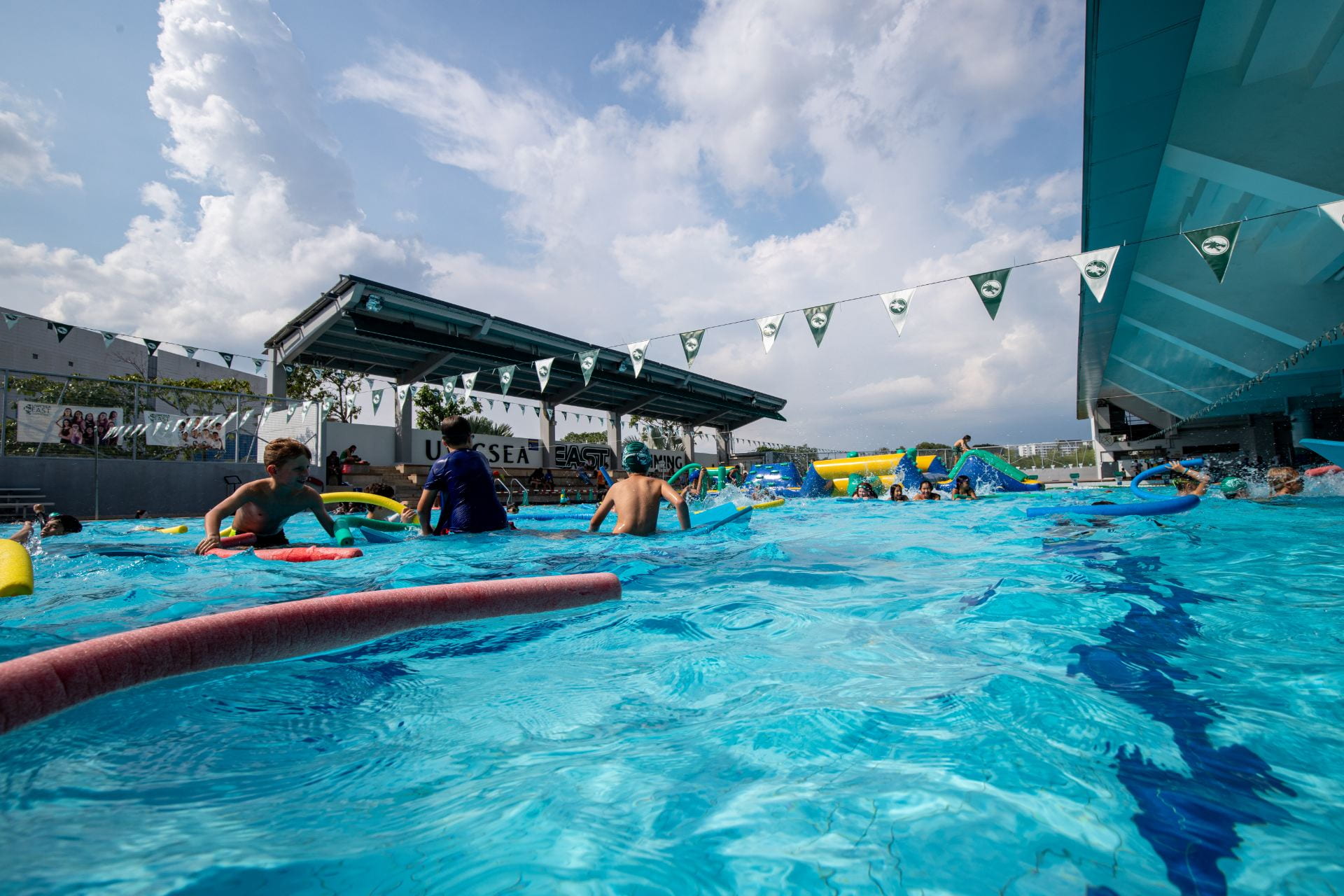
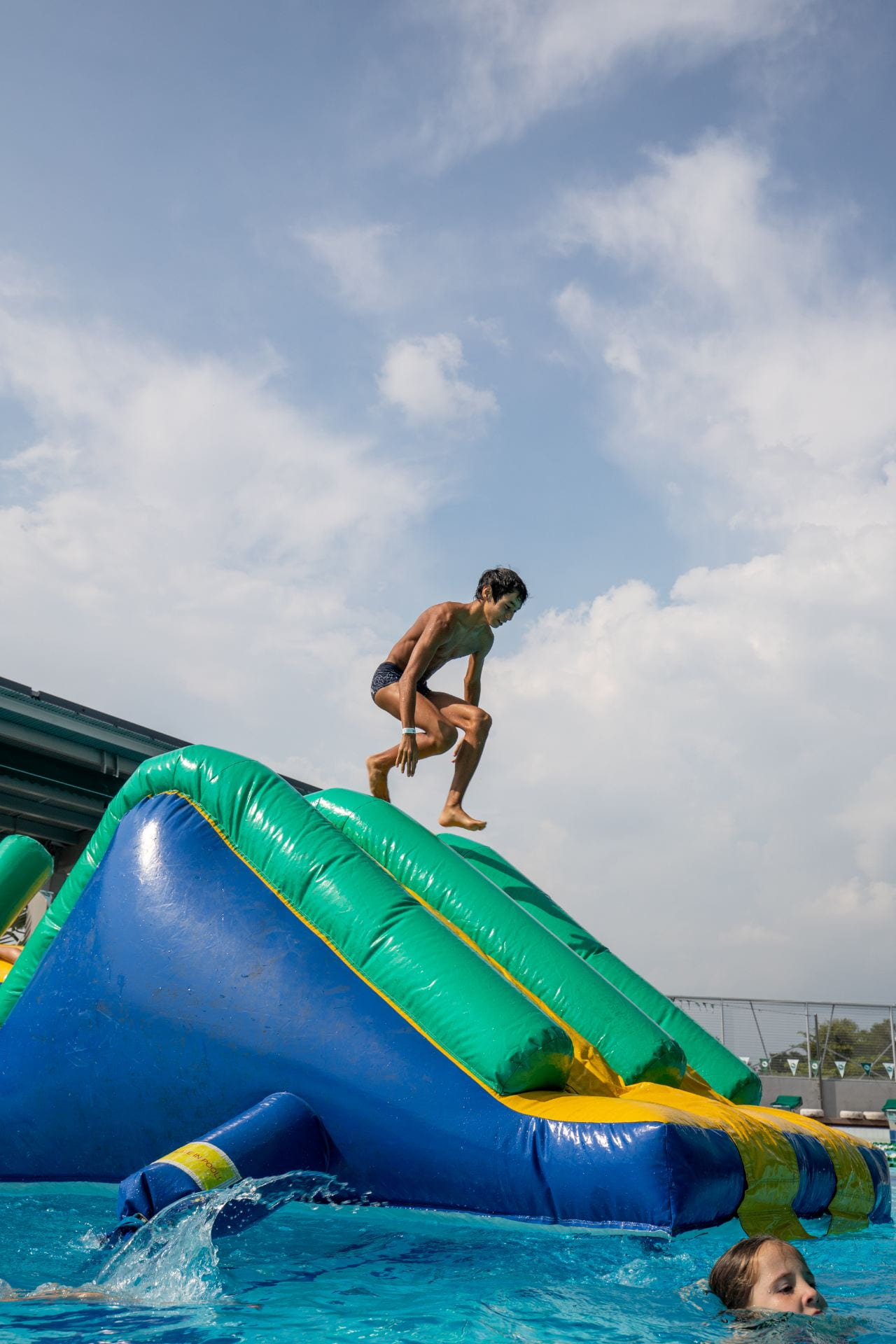
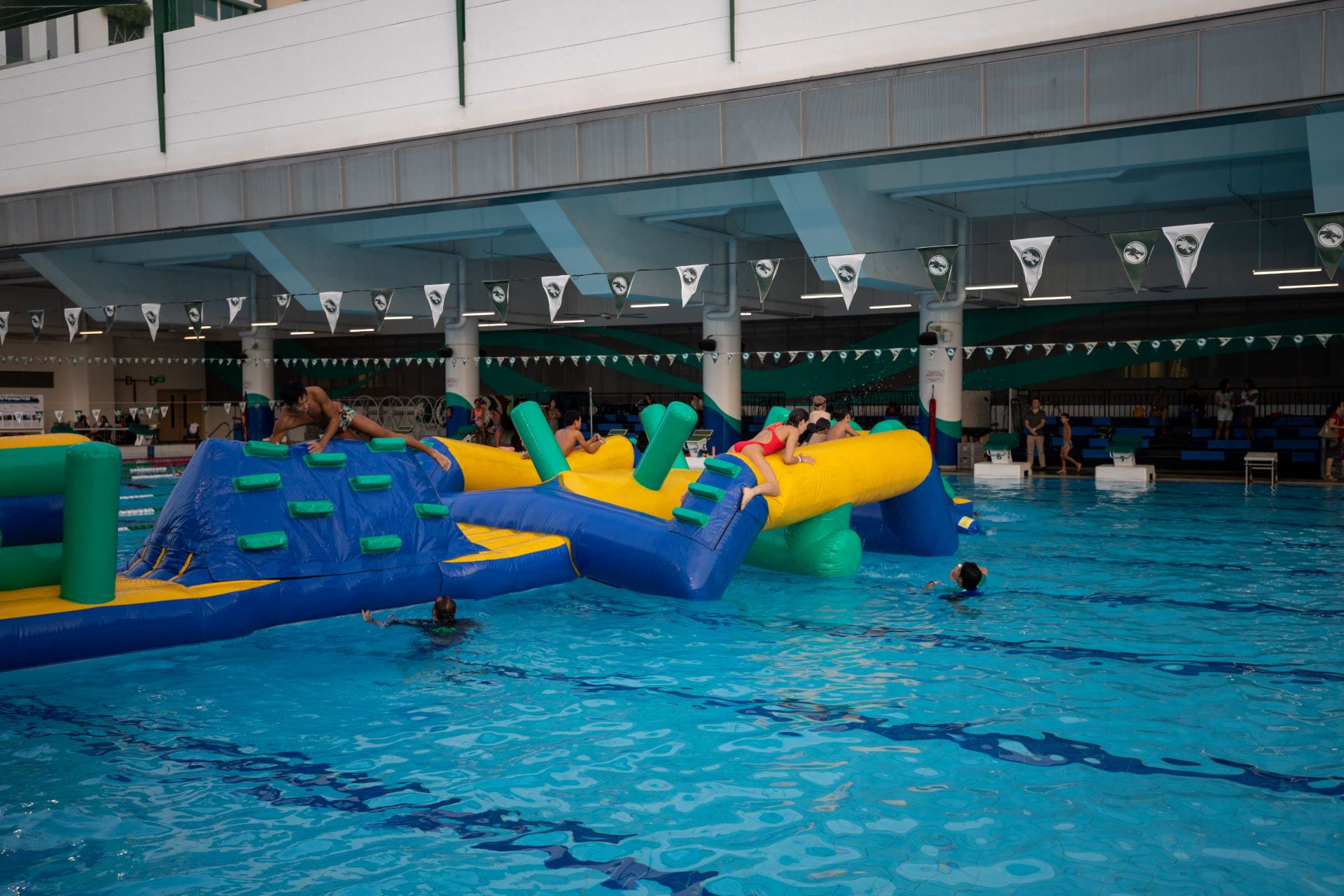


#LO3, #LO4
November 19th, 2019,
Demonstration:
Through Swimdonesia, I have learnt a few things and has evoked some important thoughts. Firstly, I have demonstrated as a committed member of the GC and I feel as though we organised the event really well, as there were not too many issues and we raised a lot of money. The biggest issue perhaps was that not everyone did attend and support with the event from our GC. The reason for this is that not everyone joins a GC because they are really passionate about the cause or want to help. Some people come because they have to or they think it’s a good idea (sometimes with intentions that being part of a GC looks good on a CV or resume), or their friends come. That is the consequence of having services so freely available at this school because there is almost a guarantee that not everyone will have enough care or will to do the extra or take part in events that we host. So that is quite a big threat meaning that we lose manpower at big events like this.
This does mean that even in our sessions, not everyone is involved and not everyone is involved productivity. In order to be productive, one has to either care for the issue or the work needed to be done (which could even just mean that you find it fun) or that you have a strong will. Unfortunately, this means that not all our GC members are there or can help as much as they can, however, that being said, it is always good to have more people helping out even if it is not that much, it can relieve the load. Or let them do menial tasks—just kidding. To be frank, there isn’t much I can really do about the situation other than hope that next year’s leadership is as productive and passionately as this year’s leadership. Although I am quite independent and usually like working alone as I find it both easier and quicker (as group work can involve people who don’t share the load with you or use you to do the work. Also decisions can take longer to finalise and sometimes, the work to be done takes longer), there are times when group work is beneficial. For instance, in design, working with other people is really important because you can bounce off of different people’s ideas and in turn make a better design.
This isn’t too different from this year’s leadership of which I am apart of. When you have people that you like working together and are as passionately and productive as you are, then working in a group is great and for me personally, it is quite relieving to take off the load sometimes. In addition, being vice-chair means that I’ll have to become more of a leader (which I am okay with but I do have difficulty talking or rather articulating my thoughts as spoken words, especially with people I am not as comfortable with or new with) which will be a new experience for me.
Our GC is there to both create awareness and to support our NGO (Gili Eco Trust) through fundraising. In the past and this year, our support has gone through events like Swimdonesia and Family Fest and raising awareness and selling products, where the profit goes to the NGO, as well as some minor ways we support the NGO. As you may have noticed if you’ve been reading some of my other posts, I am worried about the environment and in a way, strive to improve it. We’re taking action internationally in a different country to combat life underwater in the form of coral reefs and it’s an ecosystem as well as climate change and material waste on the island. There are many environmental issues but I feel like the biggest involves with energy—that causes climate change—our consumerism and related to that, the artificial nature of the materials we consume. Of course, there are other issues like soil erosion that have little to none correlation to energy or consumerism, and even if soil erosion is a critical issue, and it is, I feel as though our consumerism and climate change is really the biggest issues. In some ways, our consumerism is affecting climate change as plastics and other artificial products are made from oil which increases demand and therefore possibly both the degradation of the environment but even climate change as well.
That’s where a problem and the ethical issue lies in terms of the environment. Although our event is quite environmentally friendly through eco-friendly products that we sell to the reuse of glass to buy drinks in, and that we are supporting an NGO that has some significance although not large, to help environmental issues on the Gili Islands in Indonesia, we are sort of promoting consumerism, through the products that we sell. The best way to help the environment is not to buy eco-friendly products or recycle, but it is to reuse and repair those products. Product selling is not too big in Swimdonesia so we are focusing on Family Fair. So even if we are selling ethically produced products, it’s not the best solution. Yet we sort of has to raise money in order to support our GC. The environment is a complex issue and has many causes and effects and in my opinion, the environment is the biggest, most complex and most critical issue of all, if we are to survive and solve all other problems (which of course is impossible to solve all problems in the world).
Moreover, I also feel like awareness is no big issue here at this school because people are already very aware of environmental issues and the issues we are looking at to help even if it means that most people don’t have enough motivation or passion to help in a more significant way.
Furthermore, now I have become vice-chair of the GC along with another member of the GC. We’ve been working on goal setting, improving our portfolio/blog that I created and working towards finding new products to sell in Family Fair of next year.
#LO4, #LO5 #LO6, #LO7
January 21st, 2020
For the past few weeks, we have started to prepare for Family Festival in March, in which is a big bazaar and event at school where all the services try to raise money along with cultural exchanges through food and carnival-themed events mixed with outside small business to advertise their products or services. We have prepared by planning to make our stall more interactive through posters, presentations and videos. We have also been planning and preparing new products (of course as ethically produced and sustainably sourced and manufactured as possible) to sell at the Family Festival and future events. These products will help us raise more money and support our NGO on the Gili islands.
However, due to the coronavirus outbreak, Family Festival is cancelled. So we have been planning other ideas. Below is a brainstorm of some ideas.
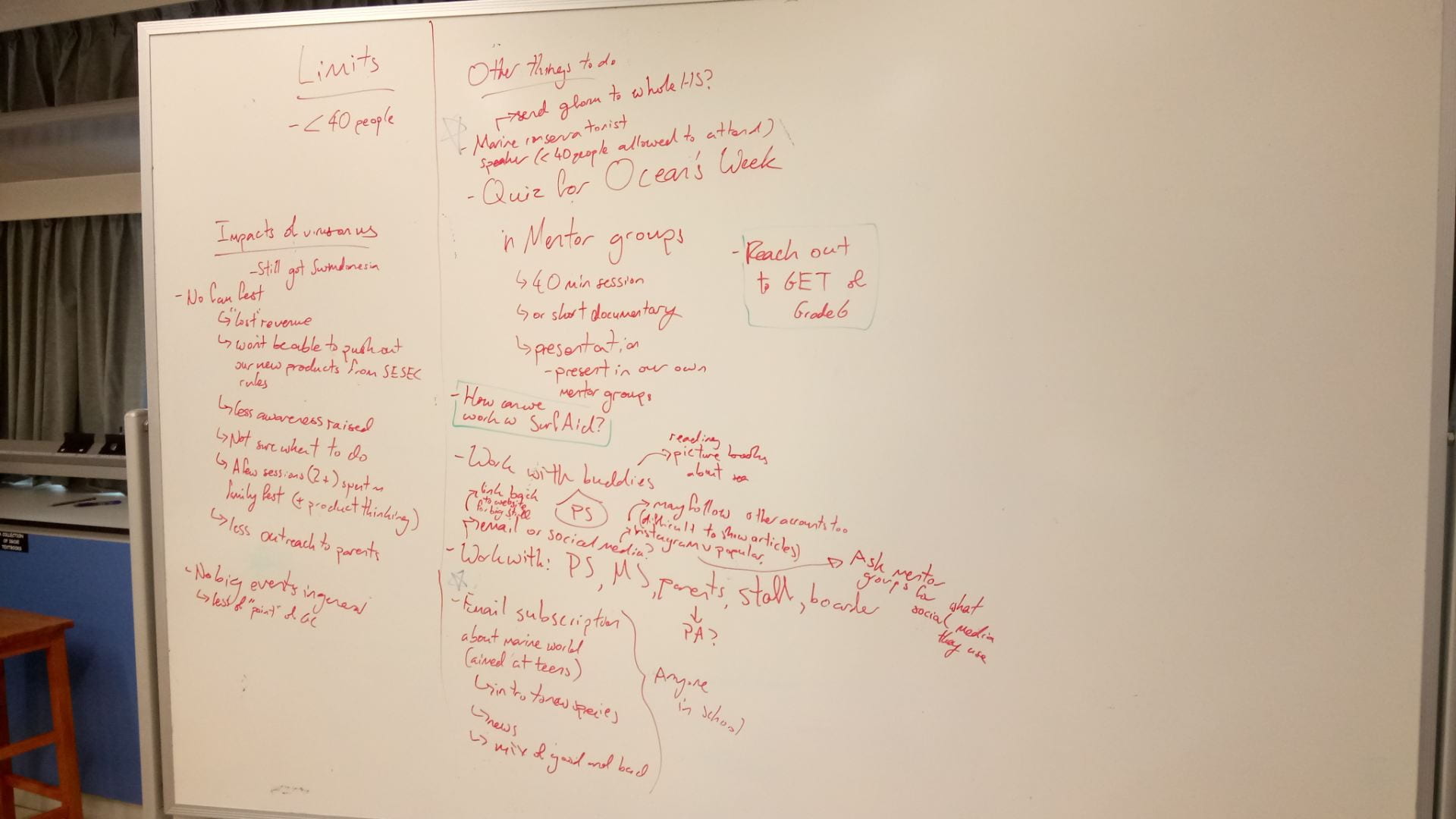

Instead of planning for Family Festival, we might be planning something small for Ocean’s day and we have ideas to plan for some sort of sale of food to fundraise for our cause. It is a difficult tie as our regular schedule has been disrupted by the virus and we cannot have a group of more than forty people.
Furthermore, I have been in charge of the portfolio and making a variety of posts with a small team to comply with the service standards that we have been set and are targeting. This will be important for new recruits next and allows the school community to research into our GC and learn more about us. We will also improve our portfolio so it is more accessible to all and is easier to navigate.
Gili Eco Trust, although we perhaps make slower progress than my other services like Solar For East and Gardening, there are so many skills that I am learning that I haven’t been able to in other areas. Being on the leadership team, I have definitely progressed more in my communication skills as a leader and working with others to strive for a common goal. I haven’t been the best speaker nor the best leader, but through this service, I have at least improved on these skills which are important later on in terms of going into the working force as an adult and job interviews.
#LO1, #LO4
April 22nd, 2020
We are living in quite a unique time right now because of the COVID-19 situation and almost everyone around the world have had and are having similar experiences with COVID-19 such as working from home, school closures, lockdowns, social distancing and many other methods. In Singapore, we have had almost a complete lockdown where schools are shut down, non-essential business are closed, people working from home, mandatory mask-wearing outside and when outside, only for much-needed exercise and buying groceries. This, of course, will affect the organisation and our service in Gili Eco Trust but despite the Circuit Breaker (that is the name of the lockdown here in Singapore which was extended to June the first from May the 4th), we still do some of the work that we still can.
We will start to have some regular meetings online as we do for our classes and the Service Executive team at our school are going to collaborate with all other GCs and services with their portfolios and placing these portfolios in one place so the school community can find them easily and learn more about what we do. So far things are going well with our GC but of course, it will affect our ability to raise money and to support the NGO.
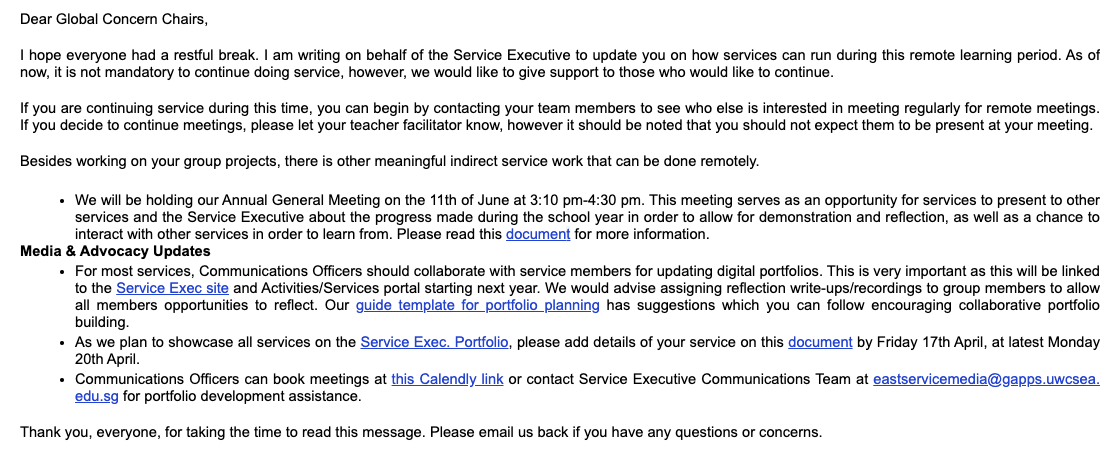
#LO3, #LO4
#LO1, #LO4
14 June 2020
Gili Eco Trust has taken a sort of a downturn as we haven’t been as productive as we haven’t achieved that much. However, we have recorded a presentation for the AGM or annual general meeting with the service exec team, made a few progress in contacting the NGO and justifying the environmental and ethical impacts of the products we might sell next year and so on. It is not like it has not been any progress but there are always more things to do.
Throughout the whole year, Gili Eco Trust has been for the most a great time and experience. A chance to do something for the environment at a larger and global scale than other services I partake in. We have fundraiser quite considerably though not as much as an average year, and we have had many successes in Swimdonesia and our portfolio. I will attend Gili eco trust meeting next year, but they’ll most likely be to hand off to new members in the service. Since I am considering a Gap year, great experience would be to help out the NGO in the Gili islands at some point so I am in some ways continuing that experience. Hopefully, things will turn out well in the service next year and our team right now will try to make most of it until the end of the year.
November 22nd, 2020
Now it is nearing the end of my time at Gili Eco Trust. Honestly, it has been quite an amazing time and has definitely been a helpful way for me to boost confidence in myself but also to further explore and develop, as well to take action, on the environment and my interest and passion for environmental sustainability. This is the service I have been with for most here at any time at this school. I definitely thoroughly enjoyed it. It was a great way to feel like I was making an impact not local but in some ways globally and locally in our school community.
However, there are things that I both wish I could have done and my worries about this sort fo service program. During university, my gap year most likely and definitely who I will be and what I will work with will have big ties and connections to some sort of environmental thinking and action. However, despite taking some action in this service, I don’t nearly feel like it was enough or that it contributes much to the society and world at large. Sure, we did raise quite a large sum of money and it has helped fund for bio rocks to build coral reefs, waste management schemes and aid to the local community in Gili after the Earthquake. However, there are definitely ways we as a service e could have been more productive and expanded our awareness and action. But the things is, of course, that is difficult especially with IB and the age that I am. I would have liked as my deepest desire to have taken a big impact in terms of the environment at this age but it doesn’t seem possible. This is because there is so much work that needs to be done in terms of school, relationships with friends, family and teachers as well as enjoying the life I have. I wish I could do more for the environment but for now, it seems that it has to suffice for small individual action and some slightly larger local and global action that may not be entirely so significant. Yes, I am part of a gardening service, solar installation service and this Gili GC among the individual action I have take and small campaigns I have done in Singapore with a few Swedish organisations like SwedCham and IKEA. I am not entirely convinced or content with my actions as I feel I could if I really tried, even though it is difficult here in Singapore, to reduce my waste to almost a minimum and take more environmental action.
Despite this, hopefully in the future, although if there is a future (but I am still optimistic despite Covid and lurking environmental issues especially Climate change), that who will be and my work/job will very much revolve around environmental sustainability.
#LO6, #LO7


